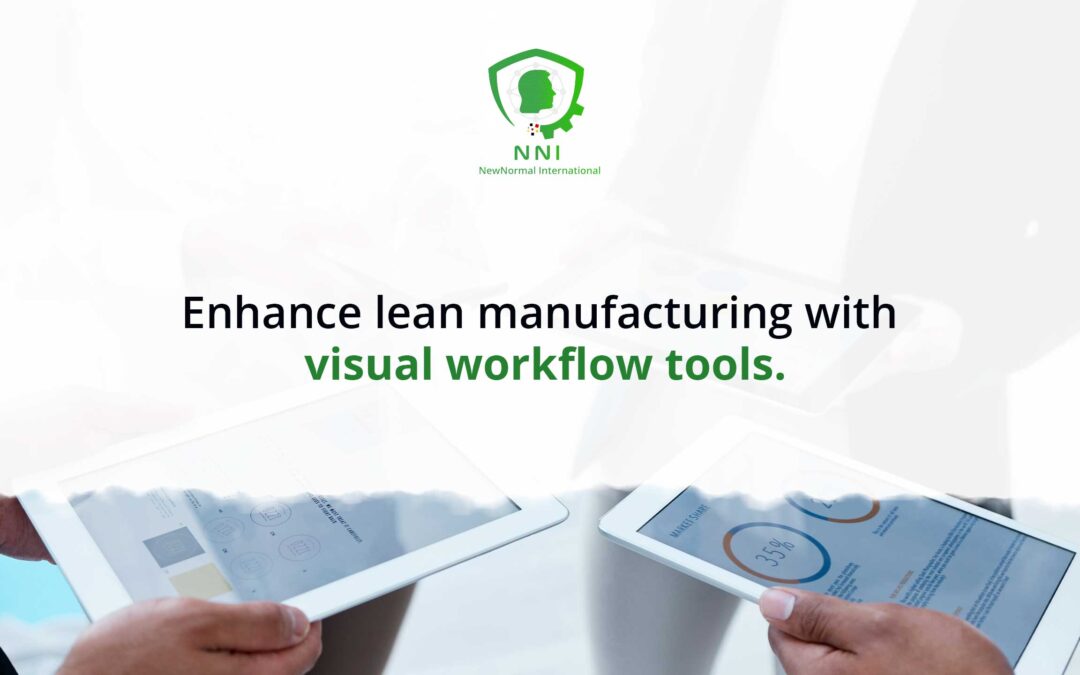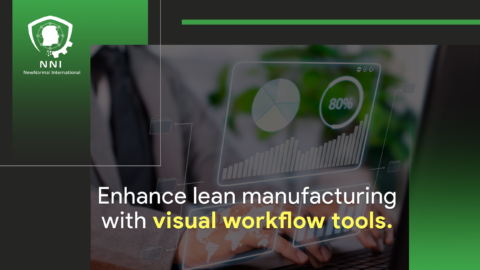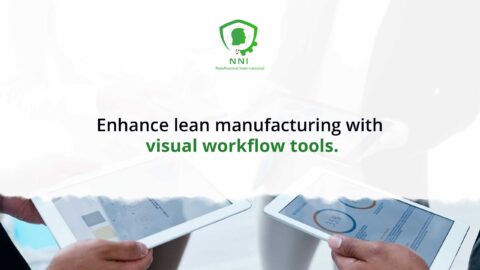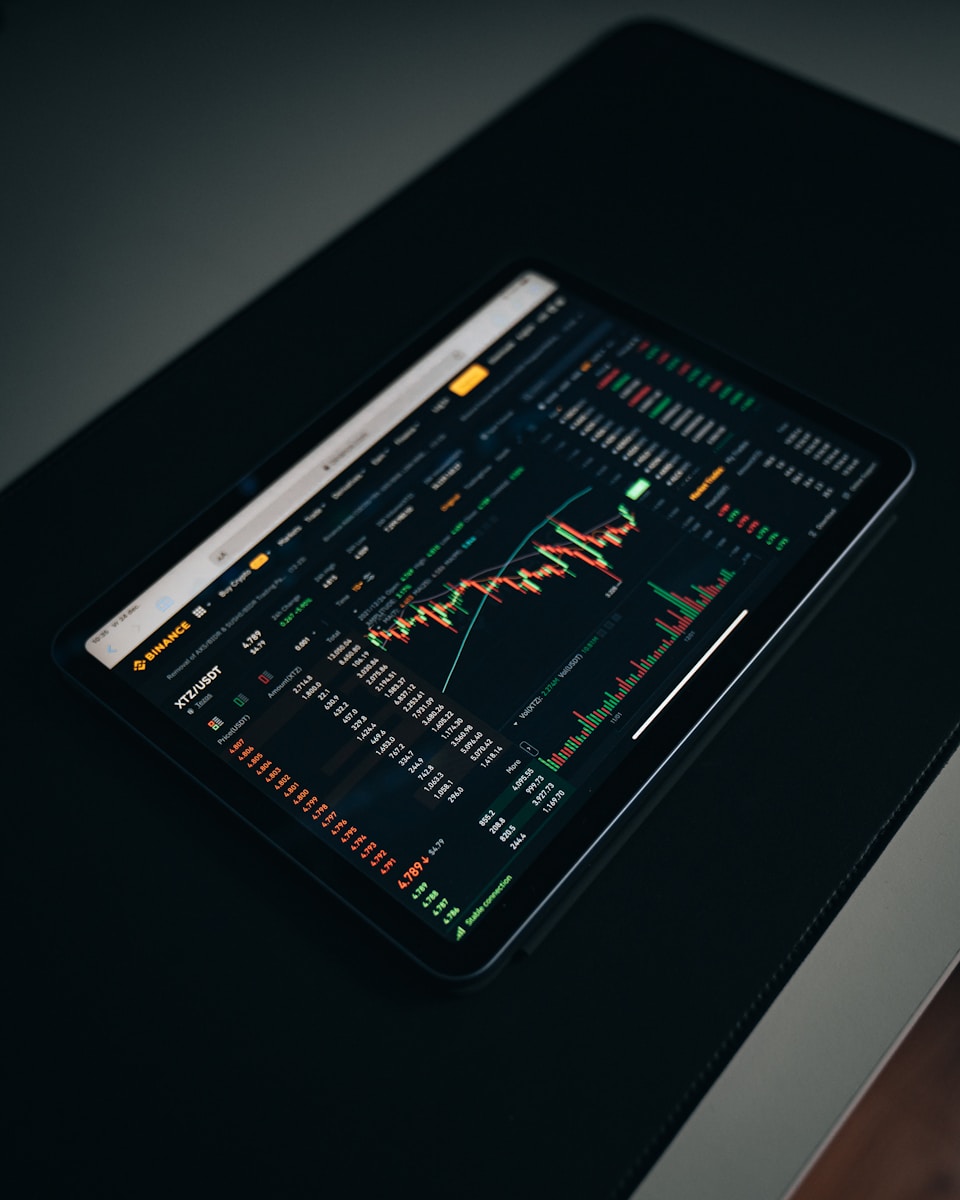Transforming Manufacturing Efficiency Through Visualization
In today’s competitive business landscape, the ability to enhance lean manufacturing with visual workflow tools has become a pivotal strategy for operational excellence. This article examines the impact of implementing visual workflow tools in streamlining and optimizing manufacturing processes.
The Role of Visual Workflow Tools in Lean Manufacturing
In the pursuit of operational excellence, lean manufacturing principles reign supreme, consistently standing out as a cornerstone strategy for businesses striving to enhance efficiency and productivity. These principles, deeply rooted in the philosophy of continuous improvement and efficiency, focus intensely on the elimination of waste in all its forms and the optimization of various manufacturing processes. This methodology not only streamlines production but also significantly improves product quality and operational agility.
Central to the successful implementation of these principles are visual workflow tools. These tools act as the eyes of lean operations, playing a pivotal role in the transformation of manufacturing processes. They do so by providing clear, concise, and readily understandable visual representations of workflows, production stages, and operational bottlenecks. This visual clarity is critical for a myriad of reasons.
Firstly, these tools help in identifying inefficiencies and waste in the production process, such as unnecessary movements, overproduction, or underutilization of resources. By laying out processes in a visual format, teams can pinpoint exactly where issues arise, facilitating quicker and more effective problem-solving. It’s a practical approach that converts complex processes into simpler, more digestible visual data, making it easier for teams to understand and engage with the processes they are involved in.
Moreover, visual workflow tools foster a collaborative environment. They enable teams across different departments to communicate more effectively, creating a shared understanding of the processes and goals. This is particularly beneficial in environments where cross-functional collaboration is key to driving operational improvements.
Another significant advantage is the empowerment of teams. When employees have a clear understanding of the processes they are part of, they are more likely to take proactive steps towards improvement. These tools provide them with the necessary information to make informed decisions and suggest meaningful changes. This empowerment leads to increased employee engagement and a stronger sense of ownership over their work, which is invaluable for sustaining lean manufacturing initiatives.
In addition, visual workflow tools facilitate continuous monitoring and improvement. They allow for real-time tracking of production processes, making it possible to quickly adjust to changes and maintain optimal operational flow. This real-time capability ensures that the manufacturing process remains dynamic and adaptable, capable of responding to various challenges and opportunities as they arise.
Finally, these tools play a significant role in training and development within the manufacturing environment. They serve as effective educational aids, helping new employees quickly grasp the intricacies of complex manufacturing processes. This is essential for maintaining high standards of quality and efficiency, especially in industries where precision and accuracy are paramount.
In conclusion, the role of visual workflow tools in the context of lean manufacturing cannot be overstated. They are instrumental in transforming manufacturing processes by enhancing visibility, improving communication, empowering teams, and fostering an environment of continuous improvement. By integrating these tools into their operational strategy, businesses can significantly advance their journey towards achieving and maintaining operational excellence.
1. Identify Inefficiencies: Bottlenecks, redundancies, and other hidden inefficiencies can easily become invisible within complex manufacturing processes. Visual workflow tools shine a light on these hidden weaknesses, allowing teams to identify problem areas and take corrective action.
2. Minimize Waste: Waste, in all its forms, is the antithesis of lean principles. By visualizing the flow of materials, information, and work, teams can identify and eliminate unnecessary steps, optimize resource allocation, and minimize waste generation.
3. Streamline Operations: Visual workflow tools act as a digital roadmap, guiding teams through optimized processes and standardized procedures. This standardization eliminates confusion and reduces variability, leading to smoother operations and increased efficiency.
4. Enhance Transparency and Collaboration: By providing a shared understanding of the manufacturing process, visual tools foster transparency and collaboration among team members. This open communication allows for continuous improvement and facilitates the rapid implementation of process changes.
5. Improve Decision-Making: Data-driven decision-making is the cornerstone of lean operations. Visual workflow tools provide real-time insights into process performance, equipping teams with the data they need to make informed decisions and optimize their workflows.
Beyond the direct operational benefits, visual workflow tools foster a culture of continuous improvement within lean organizations. They empower teams to become active participants in their own success, driving a relentless pursuit of optimization and innovation.
In essence, visual workflow tools are not just technological aids; they are catalysts for a lean transformation. By illuminating inefficiencies, minimizing waste, and streamlining operations, they pave the way for a future of enhanced productivity, reduced costs, and unmatched agility. Embrace the power of visibility and let visual workflow tools be your guide on a journey towards lean excellence.
Change Management and Lean Manufacturing
Effective change management is essential when integrating visual workflow tools into manufacturing processes. Adopting these tools requires a strategic approach, ensuring that the workforce is aligned with the new processes and understands the benefits of visual workflow optimization.
Leadership in Implementing Visual Workflow Strategies
Leadership is key in the successful implementation of visual workflow tools. Executive coaching can prepare business leaders to effectively manage the transition, foster a culture of continuous improvement, and leverage visual tools for better decision-making.
Effective Communication in Visual Workflow Implementation
Effective communication is vital in the rollout of visual workflow tools. It ensures that all team members understand the new systems and their roles in the optimized manufacturing process.
Leveraging Generative AI in Lean Manufacturing
The integration of generative artificial intelligence with visual workflow tools can further enhance lean manufacturing practices. AI can provide predictive analytics, automate complex tasks, and offer insights for continuous process improvement.
Conclusion
In conclusion, adopting the strategy to “Enhance lean manufacturing with visual workflow tools” is instrumental in achieving operational efficiency and a competitive edge in the manufacturing sector. This approach not only streamlines processes but also fosters a culture of innovation and efficiency.
#LeanManufacturing, #VisualWorkflow, #OperationalEfficiency, #AIinManufacturing, #ProcessOptimization











